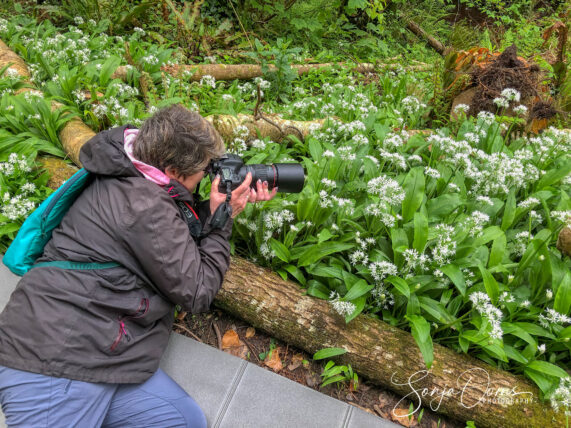After only one year we already traveled back to Pembrokeshire to continue discovering more of its dramatic cliff-top coastline. We are lovers of the sea. Although we used to spend more time under the waves than looking at them from land, courtesy of Covid we had to shelve our diving plans for the past two years. Compelled to stay on dry land we nevertheless feel the pull of the sea all the time. Which more often than not brings us to places near water on our travels, preferably with some spectacular seascapes.
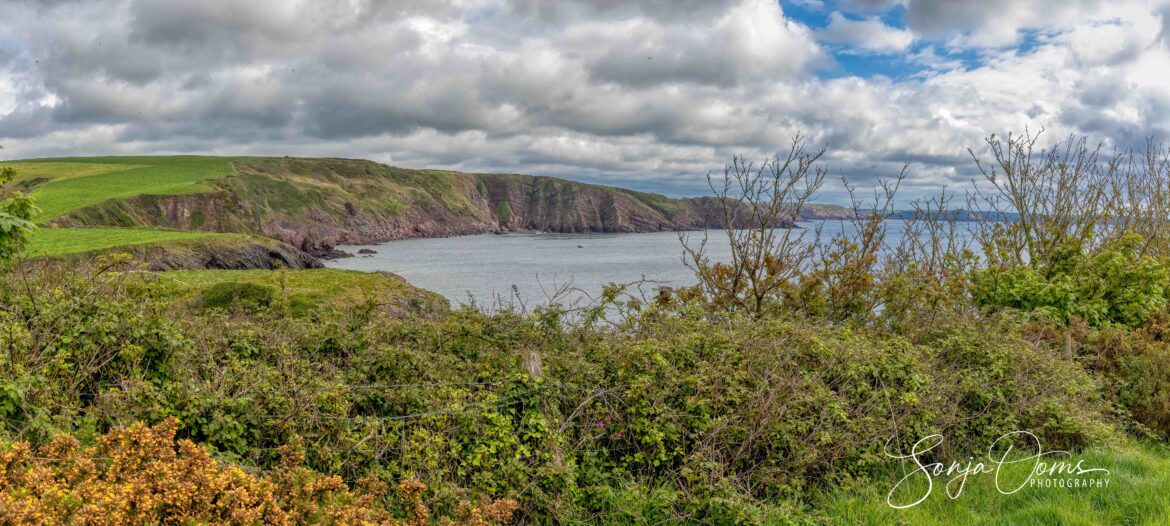
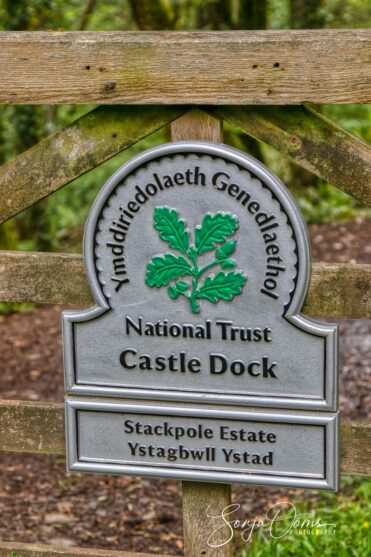
And Pembrokeshire is up there on our list of favorite places ticking all the boxes: sea, spectacular coastlines, wild flowers and of course it’s remote, sparsely populated and quiet … It both excites and enthralls with a sense of timeless beauty. And yet there are also stories to be told, of meaning and ancestry which we try to bring to you in our images.
Like the stories of the Stackpole Estate and the nearby Castlemartin Range. Two world wars heralded a century of decline at Stackpole. Half of the estate, around 6,000 acres (+/- 25 sq Km), was requisitioned by the Ministry of Defence to form Castlemartin Range in 1938. Rowdy soldiers probably found Stackpole Court on AirBnb, had a rave and caused devastating damage to the house which was finally demolished in 1963. A few years later, what was left of this historic estate, was broken up and the farms were sold. Thankfully the coast, woods and lakes passed to the National Trust and were saved for all of us nature lovers and part of the Pembrokeshire Coast Path now runs through the Range to the east of Stack Rocks. The path is closed when live firing is taking place so keep an eye on the firing times HERE before you set off.
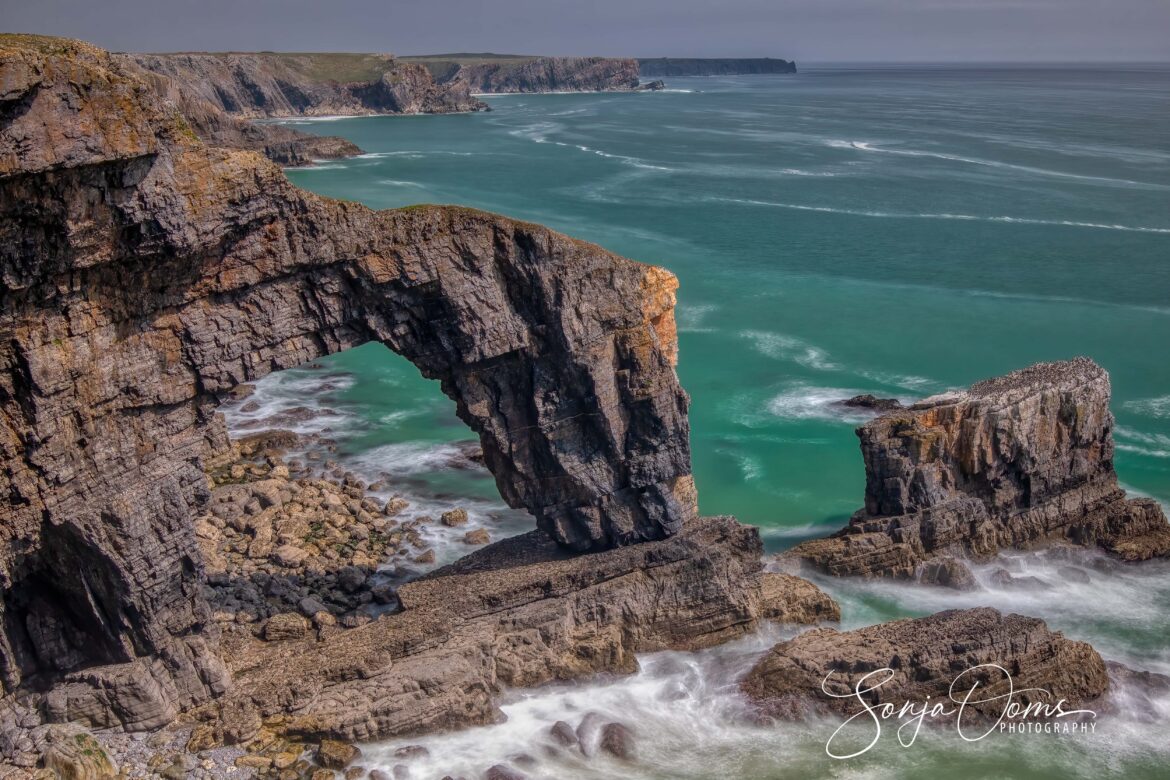
The Green Bridge of Wales and Elegug Stacks
The army uses the land as a tank firing range fairly often, but it’s left quietly to nature the rest of the time (when I say ‘quietly’, I mean in relative terms! Last year they fired more than 3 million rounds of ammunition)
But when the land is accessible to the public there are a few great sites for you to discover.
The Green Bridge of Wales and Elegug Stacks (see photos above) are rocky features of the coastline which clearly are on borrowed time. The stacks of rock are great at breeding time however; the name Elegug means guillemot in Welsh and when we visited there were thousands of them on the stacks. Imagine the noise level!
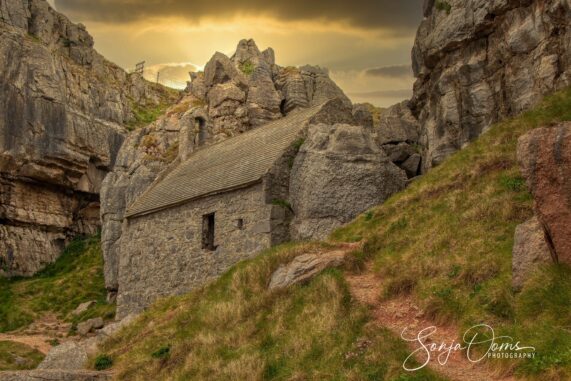
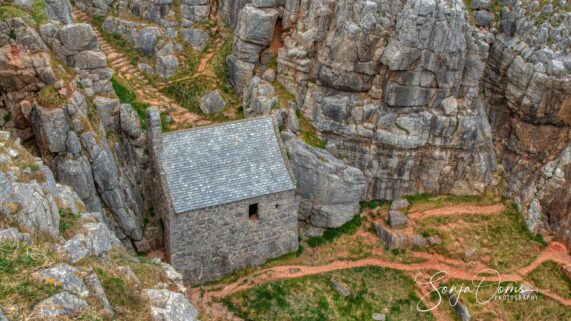
St Govans Chapel
Also along this stretch of coast – and well-hidden in the only easily accessible route to the water near St. Govan’s Head – is the tiny chapel dedicated to the eponymous saint, St Govans Chapel (13th century)
Flimston chapel
The medieval Flimston chapel stands in the middle of the Castlemartin tank firing ranges. It was converted to form a cart house for the adjoining, now abandoned, farm. It was rededicated in 1903 and is now beautifully restored.
But do I have to repeat myself: the single-track road out to the church and to the coast at St. Govan’s Head is only open when the tank ranges are closed.
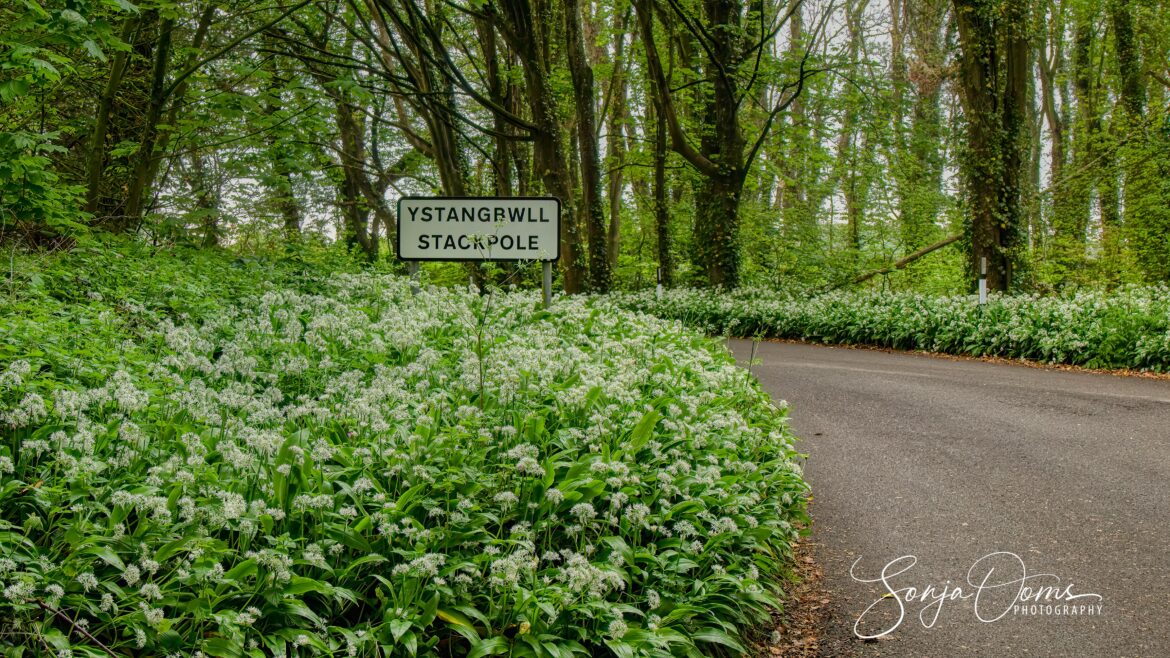
Stackpole village & surrounding woods
Stackpole village, population 200, but the largest concentration of wild garlic flowers I have ever seen! You could smell them from miles away! And if you had to ruffle them for shooting pictures, your clothes smelled like garlic for hours! Did you eat garlic darling? No, I went on a flower photo-shoot 🙂
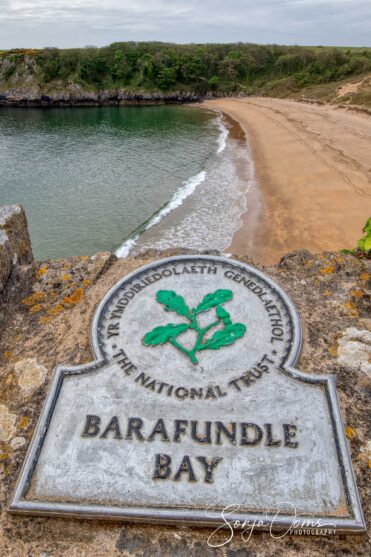
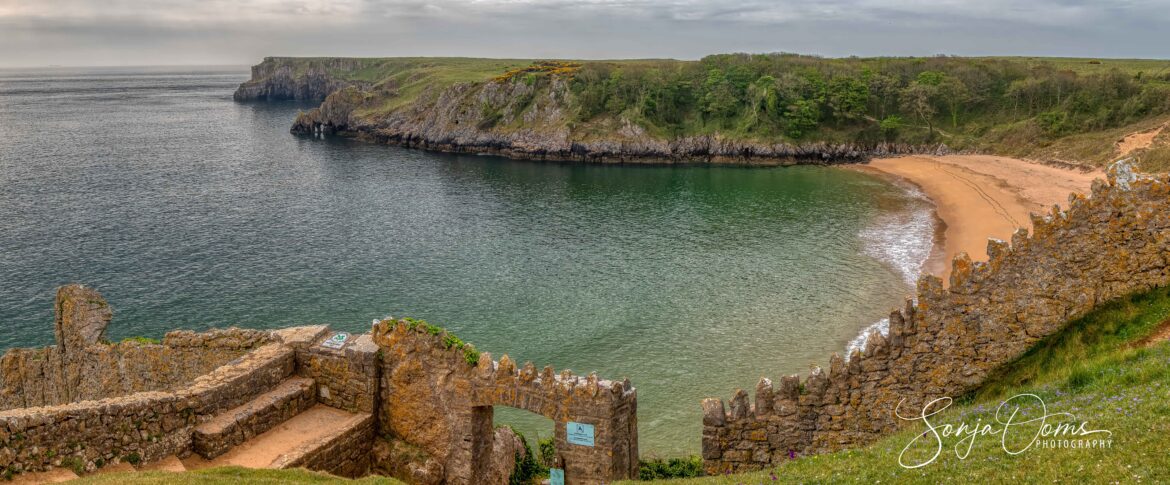
Barafundle Bay & Beach
Barafundle Bay & Beach. About 4 miles north of St Govans Head along the spectacular coast path. Park at the National Trust Stackpole Quay car park (with café – important detail for the après-walk 🙂 ) Go south along the coast path and you’ll end up at Barafundle Bay. It can get quite busy of course as there’s a huge beach. But go there in May when it’s “adults only – the noisy brats safely locked in school – time” and as you can see, you have it all to yourself!
But even when Barafundle is busy: from the car park go north and you will be able to walk for hours meeting only the occasional lover of solitude and nature like yourself. That is also where we made most of these dreamy (extremely shallow depth of field) spring flower shots.
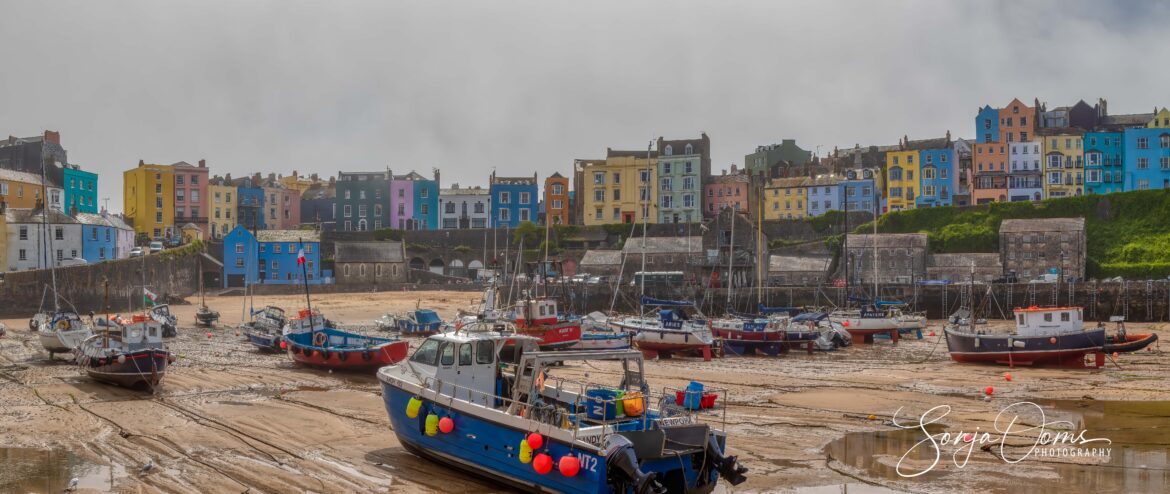
Tenby harbor at low tide
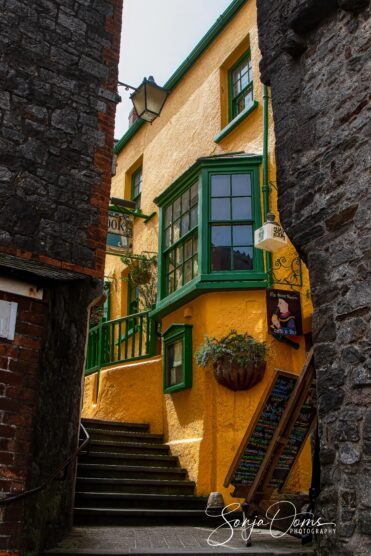
One of the best-known and best-loved traditions of West Wales’ coastline: harbor-side houses painted in a spectrum of pastels
As the story has it, fishermen would paint their terrace homes around the dock in varying colors so they could recognize their own as they returned from the sea (or the pub more likely 🙂 )
It is likely the origins of the ritual are probably more down to earth: buildings were covered with color washes to both hide the poor quality stones beneath and help keep the buildings more watertight.
Today those colors are the hallmark of towns around the Pembrokeshire coast, from popular Tenby to the tiny bay of Solva and up to beautiful Aberaeron, all of which boast rows of pretty Georgian and Victorian cottages and houses in a rainbow of peach, blue, green, violet and pink.
Carew (L) and Pembroke Castles (R)
Ah almost forgot, well it is Wales after all, there’s always a few ruined castles around. These are Carew (L) and Pembroke Castles (R). Carew castle is not that impressive, perhaps more interesting if you’re visiting, is the tidal mill behind the castle, the only intact mill of this type in Wales. It was abandoned in 1937, restored in 1972, and now houses a museum.
Pembroke castle might be interesting for the history buffs as it was once the cozy home of King Henry VII, father of…well you might have guessed it: Henry VIII, the one with the 6 wives (Divorced, Beheaded, Died, Divorced, Beheaded, Survived)
Coopers Dip
And I must absolutely end with a word about where we stayed. We were lucky enough to find this little gem in Stackpole. Imagine spending a week in a rustic, comfortable and quiet Welsh cottage. And have for only neighbors a few Welsh cows. Within walking distance of Stackpole Lily Ponds, less than a two mile walk from Barafundle Bay. Broad Haven South beach is accessed by foot from the cottage by a scenic walk through the National Nature Reserve which lies within Pembrokeshire National Park Coastline. If you would ever get the chance to stay here, don’t hesitate for a second. Look up the cottage, just google “Coopers Dip”.
Stackpole Inn
You thought I was going to forget about the really important stuff: food! If you know us you will know we can’t even boil an egg without burning it, so believe me pubs and restaurants are important for our survival 🙂 When you come back hungry from a long day of walking along the coast path, head for the dog friendly Stackpole Inn which occupies the former village Post Office, a building of sixteenth-century origin. This Inn is just minutes away from Coopers Dip and serves excellent food (not just the traditional pub grub – this is a genuine Gastro Pub) with a big smile from the friendly staff.
Watch this space, next stop Yorkshire Dales.
